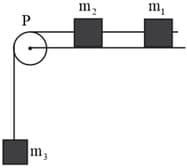Two blocks of masses and are placed one over the other as shown in the figure. The coefficient of friction between and is and between and ground is . If a horizontal force is applied on the upper block and is the tension developed in the string, then choose the incorrect alternative.
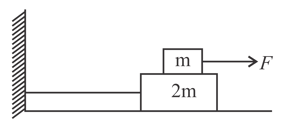

Important Questions on Friction
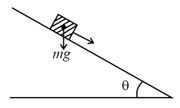
Two blocks ( and ) are arranged on a horizontal frictionless table as shown in the figure. The coefficient of static friction between the two blocks is Then the maximum horizontal force that can be applied on the larger block so that the blocks move together is (Round off to the Nearest Integer) [Take as ]


A system of two blocks of masses and is placed on a smooth table as shown in figure. The coefficient of static friction between two blocks is . The maximum horizontal force that can be applied to the block of mass so that the blocks move together will be

A block of mass is (i) pushed in case and (ii) pulled in case by a force making an angle of with the horizontal, as shown in the figures. The coefficient of friction between the block and floor is The difference between the accelerations of the block, in case and case will be:
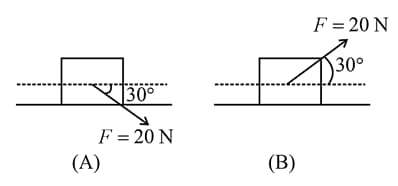
A block of mass resting on a horizontal surface is connected by a cord, passing over a light frictionless pulley to a hanging block of mass . The coefficient of kinetic friction between the block and the surface is . Tension in the cord is
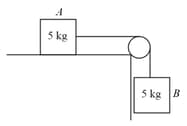
A block of mass is kept against an accelerating wedge with a wedge angle of to the horizontal. The co-efficient of friction between the block and the wedge is . What is the minimum absolute value of the acceleration of the wedge to keep the block steady. Assume
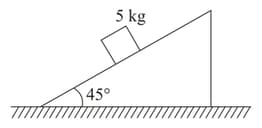

Given in the figure are two blocks and of weight and , respectively. These are being pressed against a wall by a force and kept in equilibrium as shown. If the coefficient of friction between the blocks is and between block and the wall is , the frictional force applied by the wall on block is:
